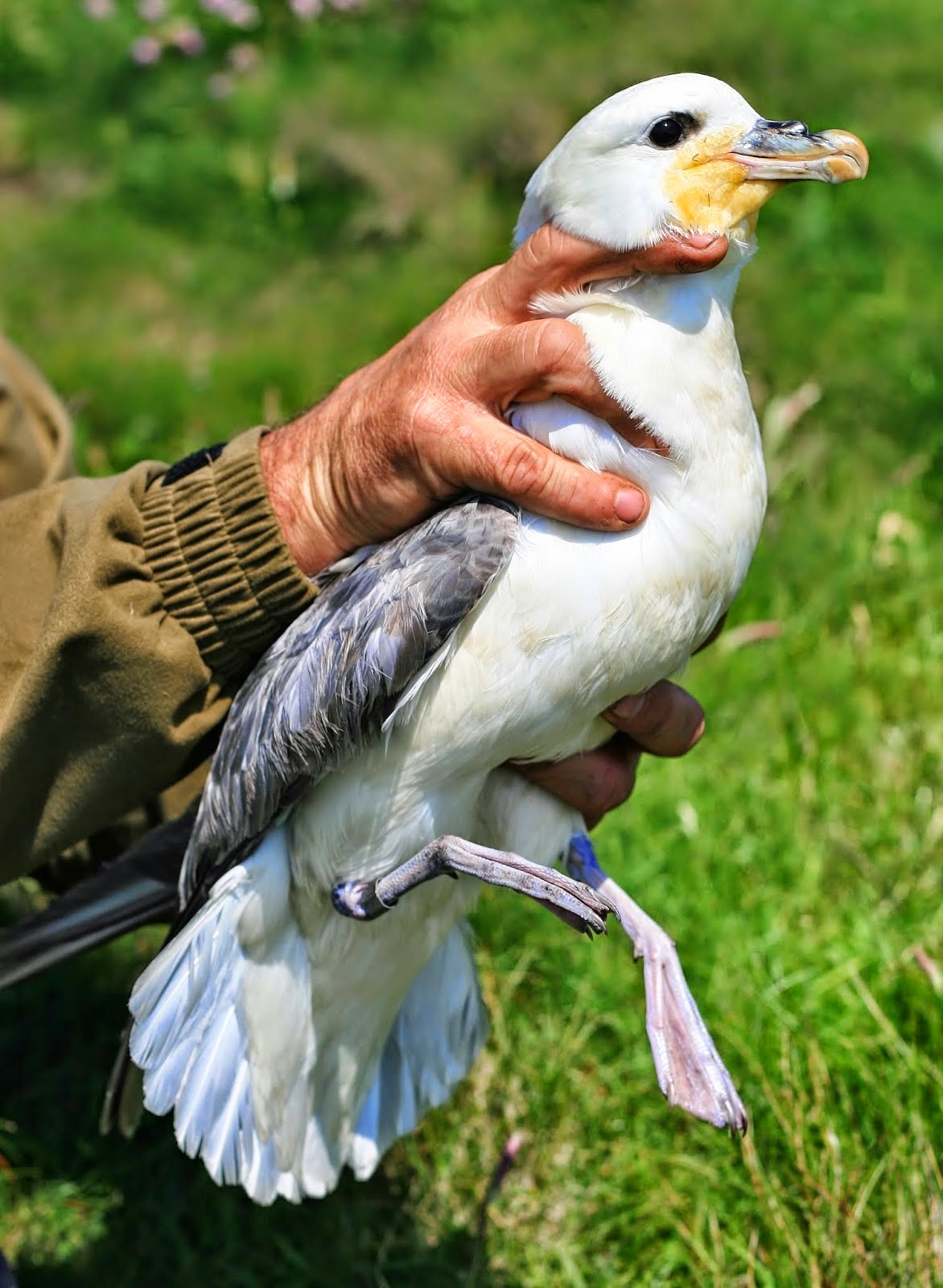Thursday night/Friday morning saw what was hopefully the first of several mist-netting visits to the Dyfi Osprey Project at Montgomeryshire Wildlife Trust's Cors Dyfi reserve. Netting is being conducted at the request of Emyr Evans to discover what else, other than Ospreys, are using the reserve to breed and in what numbers. Hopefully this may develop into a CES in future years adding to the BTOs network of CES's and helping to boost the low number of such sites in Wales.
Lots of the young warblers were still recently fledged so not moving about much but even so we did manage to catch almost 80 birds including 12 Willow Warblers, 10 Blackcaps, 10 Reed Warblers and 10 Sedge Warblers (including one wearing a French ring).
Also caught were 3 Jays (not a bird we catch all that often) one of which got its own back on me during the photo-shoot!
'Gurning' whilst holding birds for photos is increasingly frowned upon
but I guess in this instance it might be justified!
Unfortunately, despite showing early promise, none of the four Cuckoos present wanted to co-operate and I guess that by the time we return in a week or so they will have left on their long journey to Central Africa.
More can be found on the DOP's Facebook page
https://www.facebook.com/pages/Cors-Dyfi-Reserve-Observatory/1437926233102213?hc_location=timeline
Thanks to Emyr Evans for the Jay photos and Maria Wagland for the one of the Sedge Warbler
Thanks to Emyr Evans for the Jay photos and Maria Wagland for the one of the Sedge Warbler




























